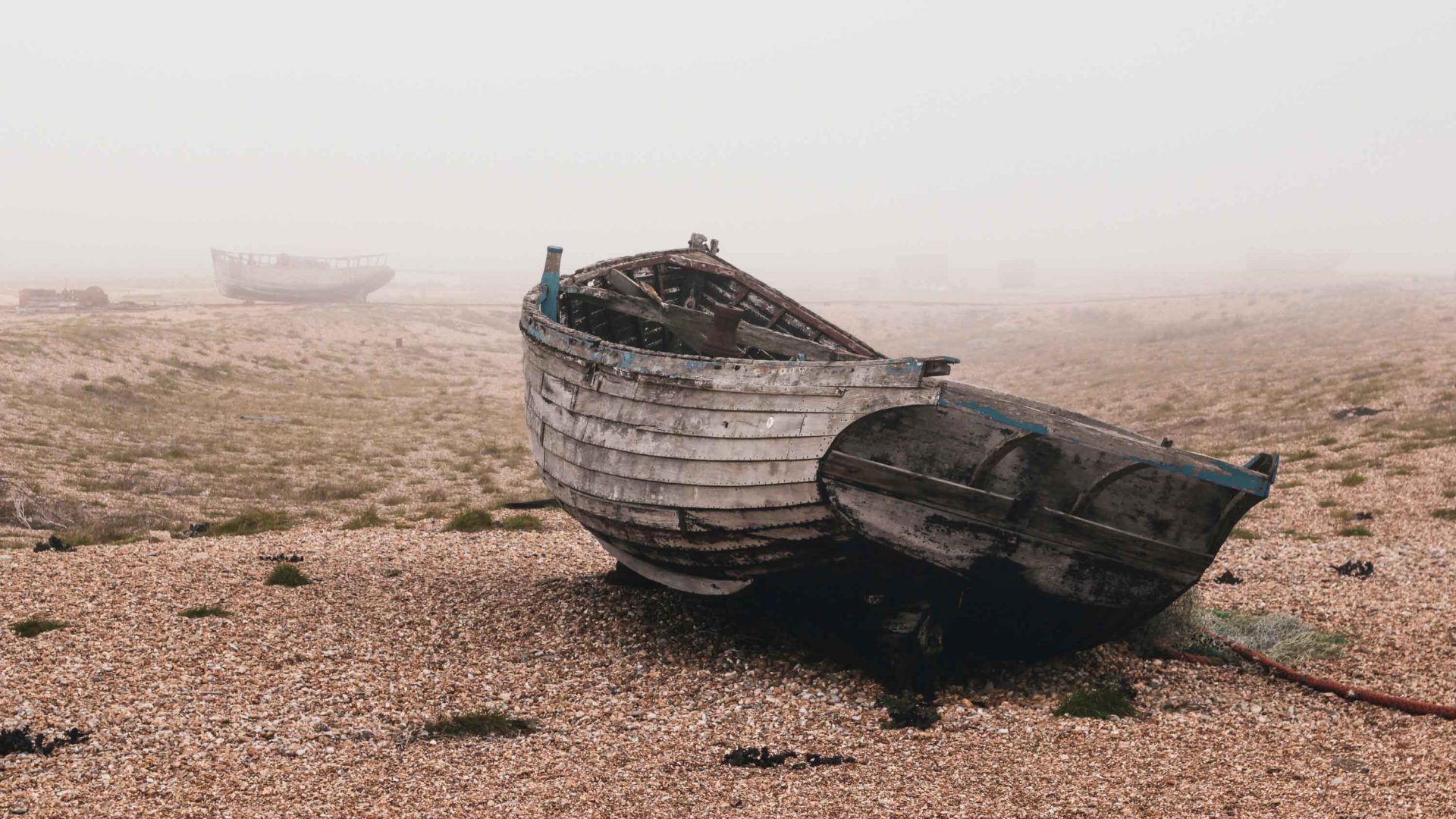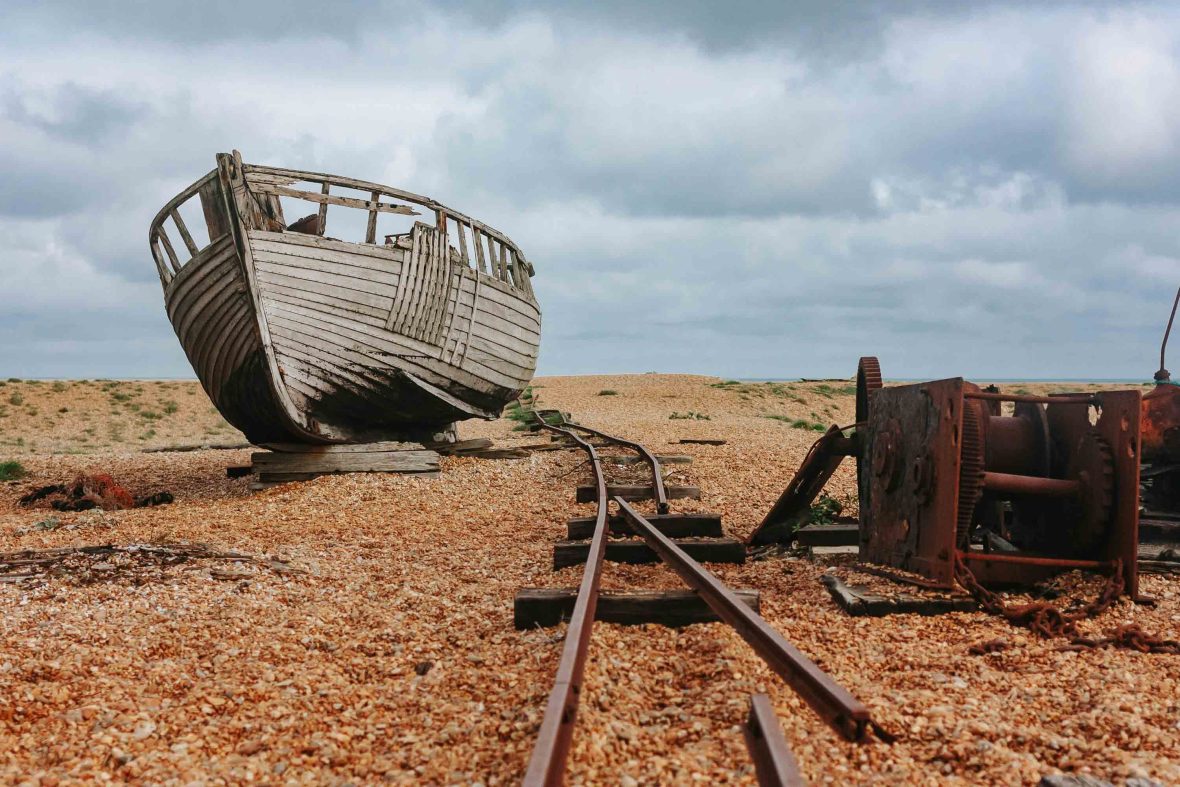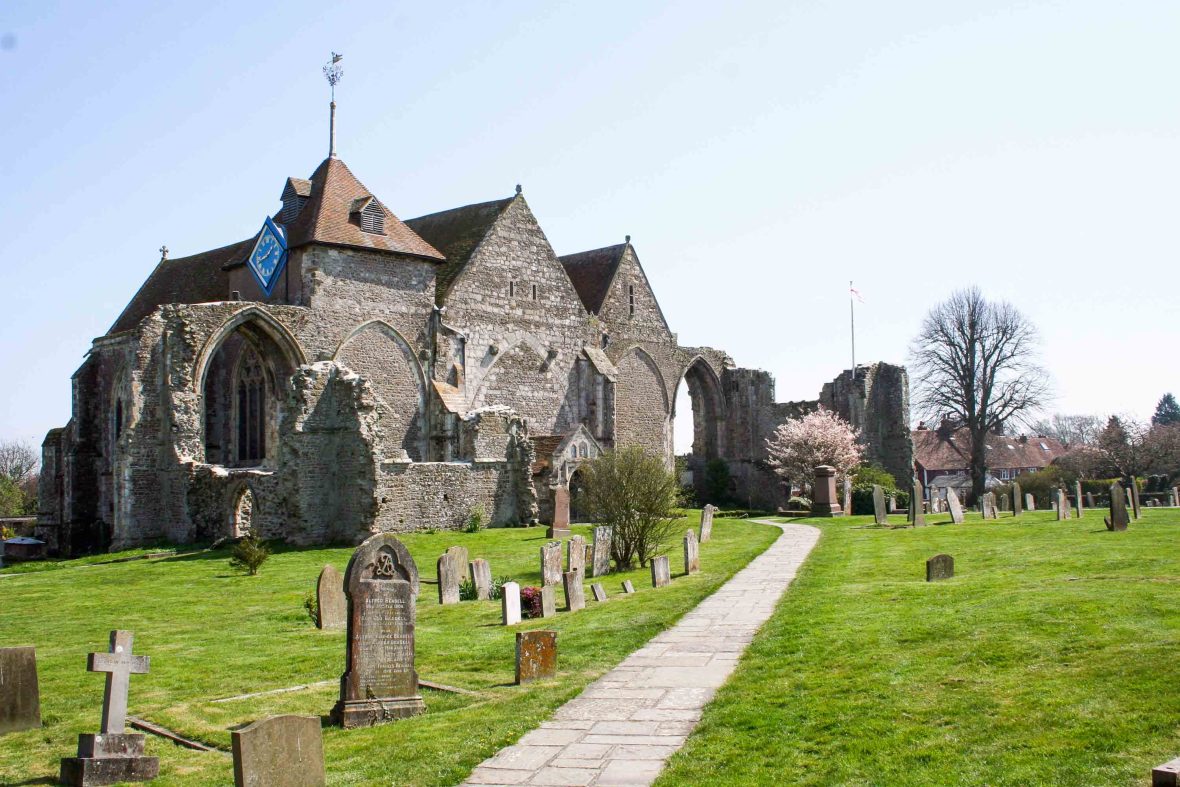
Not so long ago, the beaches of Kent looked different than they do today. Writer Shafik Meghji explores how the history of England might give us a look into the future of our coastlines—and the planet.


Not so long ago, the beaches of Kent looked different than they do today. Writer Shafik Meghji explores how the history of England might give us a look into the future of our coastlines—and the planet.
Midway through an unseasonably hot October, I arrived on a peninsula often described as the UK’s only desert and trudged through a burst of torrential rain toward a pair of nuclear power stations.
A vast expanse of shingle, ridged like a washboard and covered with brambles and yellow-flowering gorse, stretched out before me, crunching underfoot. Electricity pylons marched into the distance and gulls flashed across the slate-gray sky, which, at some imperceptible point, merged into the choppy sea. ‘It looks post-apocalyptic,’ admitted local Royal Society for the Protection of Birds (RSPB) warden Craig Edwards. Improbably, though, this stark landscape is one of the most biodiverse places in the UK.
Europe’s largest shingle beach, Dungeness, is a place where time, memory, and the near future collide. Flanked by Romney Marsh, it strains at the Kent coastline, bulging into the English Channel, seemingly desperate to reach across to France. The peninsula dates from the end of the last Ice Age, which deposited a mass of stones, pebbles and sediment on the seabed. Over millennia, in a geological process known as longshore drift, the prevailing current shifted the shingle along the coast, forming headlands such as Dungeness. The result is an uncanny landscape: Largely flat, desiccated, seemingly unchanging terrain, lashed by wind and waves, and scattered with relics from other eras.

Largely cut off from the rest of Kent, Dungeness was sparsely populated by fishers until the early 20th century. In 1928, the miniature Romney, Hythe & Dymchurch Railway (RH&DR) was extended to the peninsula. The abundance of seabirds prompted the RSPB to open the peninsula’s first reserve four years later. The government also took advantage of the isolation to build a military training site, followed by the first of two nuclear power plants in the 1960s.
As the rain eased, I walked across the tip of the peninsula, passing upturned fishing boats and an old water tower, to a hamlet of beach houses, cottages, a pub and a mini RH&DR station. Nearby, next to a lighthouse, were the nuclear plants, Dungeness A and B, nondescript but unsettling, office-gray in color and heavily protected. They stopped operating in 2006 and 2018, respectively, but decommissioning will continue for decades.
To the west, a former Royal Air Force base housed three concrete monuments that underscore the area’s otherworldly character: A long, curved wall and what looked like two giant satellite dishes. These acoustic mirrors were built in the 1920s and ‘30s to reflect and focus sound waves, briefly functioning as an early warning system for enemy planes, before being rendered obsolete by faster aircraft and radar.
Despite appearances, Dungeness is not a desert—it receives too much rainfall, as I discovered first-hand. Regularly described as ‘desolate’, the headland is actually a Site of Special Scientific Interest (SSSI) and a national nature reserve. Inadvertently, the nuclear plants once played a role in this: Their hot-water discharges into the sea attracted a plethora of small fish and, in turn, hordes of gulls, dolphins and seals. The sound mirrors, meanwhile, have been colonized by seabirds.
Dungeness has proved similarly fertile to the imagination, drawing authors, artists and filmmakers, and acting as a backdrop to countless TV programs and music videos. Writer, director and LGBTI+ activist Derek Jarman, who lived here in Prospect Cottage, described it as “the face of an angel with a naughty smile.”
I spent the afternoon exploring the RSPB reserve, which spans 1,000 hectares of the peninsula. “There are over 3,800 species on this site alone,” explains Edwards. “A third of the UK’s native plants. Over 300 species of birds.” This is thanks to a remarkable variety of habitats, including lakes, marshland, sandy areas and fens, and microclimates. Counterintuitively, nutrient-poor soils also help, preventing grasses from crowding out other plants and the myriad invertebrates that rely on them.
“Mother Nature drowned Old Winchelsea and now leaves New Winchelsea high and dry—the harbor silts up so the town can’t trade.”
- Peter Casstick, Guide
Amid frequent downpours, I hiked across rippling banks of multicolored shingle and followed trails bordered by rosehips and blackberry clumps. The reed-fringed lakes were hives of activity: I spotted marsh harriers, widgeons and a kestrel. Occasionally, sounds from the outside world drifted over—a revving motorbike, a chorus of ‘baas’ from the wooly neighbors.
On a wet autumnal day, it was easy to push the climate emergency to the back of my mind, yet it is already having a “big impact” on the reserve, says Edwards. “Last summer we went from the lowest water levels recorded to one of the highest in a month. Species can’t adapt in that period. Some birds aren’t coming in the numbers they once did—reed warblers, sedge warblers, tree sparrows.” Simultaneously, species traditionally found in warmer climes—glossy ibis and great white egrets—are now arriving.
The RSPB is trying to “future-proof” the reserve, building artificial islands for nesting and regulating water levels via pumps and sluices, while the Ministry of Defence is reinforcing sea protection to shield the power stations. But there are concerns about wildfires and rising seas as the climate emergency intensifies. Studies suggest low-lying Dungeness could regularly fall below sea level by 2050.
The next day, I found a vivid illustration of the impact of climate change in neighboring Sussex. Accessed via a medieval gate and laid out on a grid system, the town of Winchelsea has a tranquil, luxurious air. The streets are lined with beautiful houses, and St. Thomas’ Church, resembling a mini cathedral, dominates the center. There is a handsome pub, shops, and plenty of local activities: Flower-arranging classes, literary talks, piano recitals.
Although founded 700 years ago, this version of Winchelsea is a relatively new town. If you gaze towards Dungeness from the Strand Gate viewpoint, you can make out Rye Bay—somewhere below which lie the remains of Old Winchelsea. Built on a shingle spit, the town was a major trading port and notorious pirate hub, explained Peter Casstick, a guide at the Court Hall Museum opposite the church.
But during the 13th century, Old Winchelsea was hit by devastating storms, their force magnified during an era of climate change—in this instance, natural rather than human-caused—known as the Medieval Warm Period (circa 800-1400 CE), which saw temperatures rise in regions such as northern Europe that “changed ecosystems and radically altered human societies,” as The Conversation has noted.
“The population kept petitioning King Edward I because the town was regularly being flooded,” says Casstick. “By the 1280s, nothing had been done, but the storms were really damaging.” Belatedly, the king relocated the town to nearby Iham, a hilltop settlement safe from flooding yet possessing a large harbor. “In 1287 the big one comes, probably a tsunami-like storm,” continues Casstick. “Whatever was left of Old Winchelsea disappeared overnight.”

As he showed me around the museum, Casstick explained that the new town was soon thriving. By 1325, it was home to 5,000-6000 people—a third as many as London at the time—and profiting from the lucrative Gascony wine trade. But the 14th and 15th centuries have a contemporary resonance: War in Europe, a pandemic, environmental disasters. French forces attacked Winchelsea during the Hundred Years’ War, followed by a Castilian assault and the ravages of the Black Death, before the final blow in the mid-1400s. “Mother Nature drowned Old Winchelsea and now leaves New Winchelsea high and dry—the harbor silts up so the town can’t trade.” says Casstick.
Residents left and the church fell into ruin, but it was an elegant form of decline. Like Dungeness, the town attracted artists, writers and entertainers: JMW Turner came to paint in the early 1800s, authors Ford Madox Ford and Joseph Conrad moved in a century later, and comedian Spike Milligan was buried in St Thomas’ graveyard in 2002.
Today, the population is around 550 and a road runs through the old harbor, the only water found in the narrow River Brede. But traces of its former glory remain. Winchelsea is still officially a town with its own mayor, many of the original wine cellars have survived and the church is being renovated. It also feels ahead of its time, transmitting a message from the past about the importance of heeding warnings and planning for the future—something echoed wryly by Milligan’s self-penned epitaph, inscribed on his gravestone in Irish Gaelic: “I told you I was ill.”
***

Shafik Meghji is an award-winning travel writer, journalist and author of 'Crossed off the Map: Travels in Bolivia'. Specializing in Latin America and South Asia, he has co-authored more the 40 guidebooks for DK Eyewitness and Rough Guides, and writes for BBC Travel, Wanderlust and Lonely Planet, among others.








Can't find what you're looking for? Try using these tags: